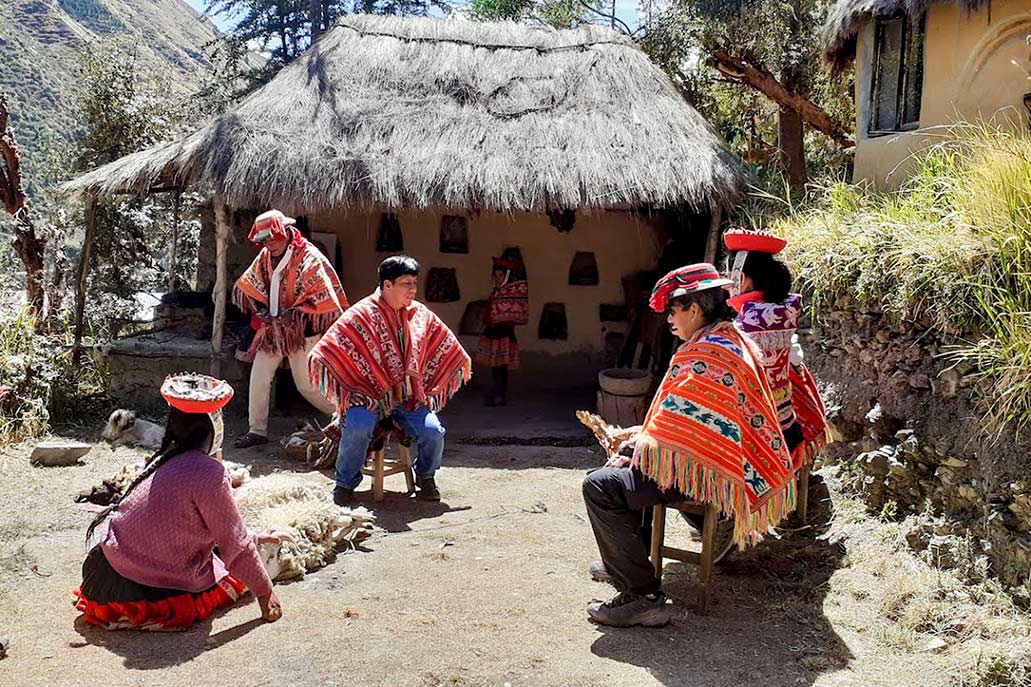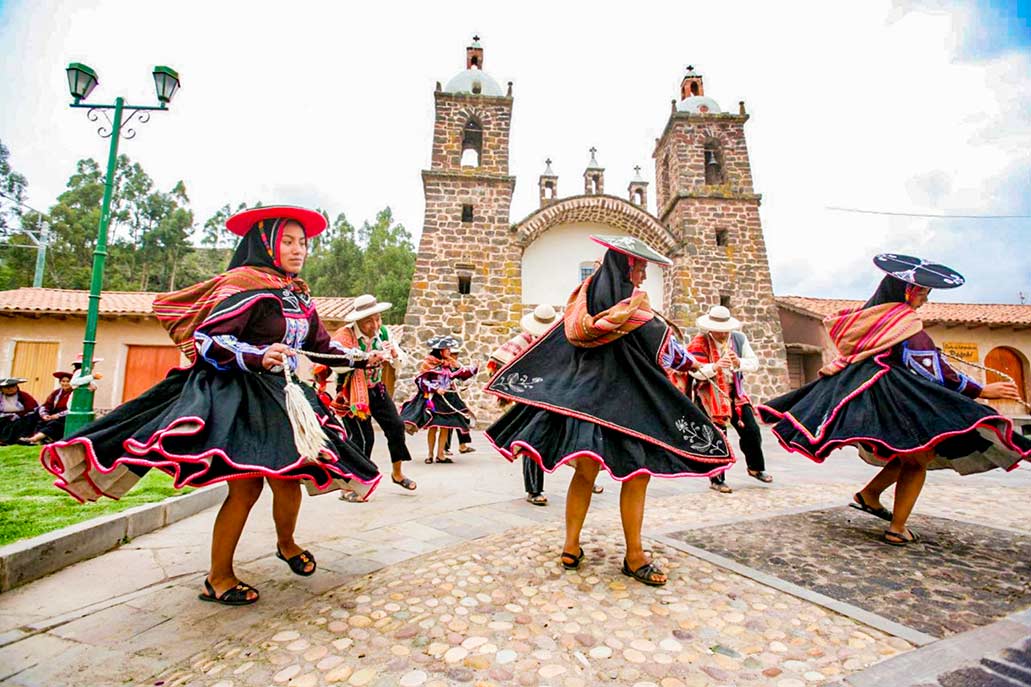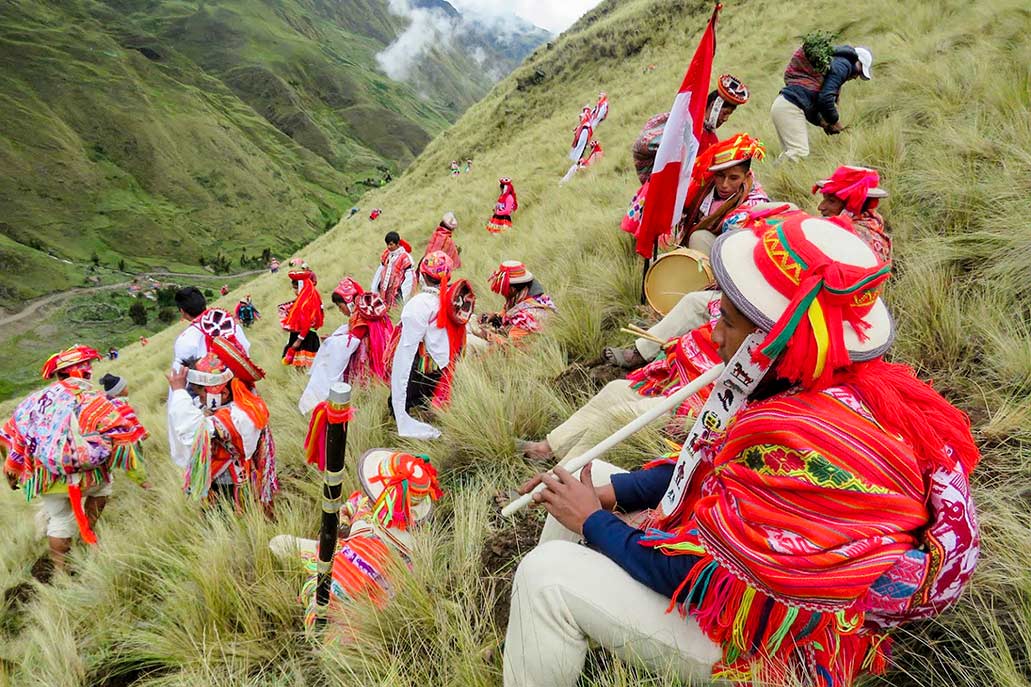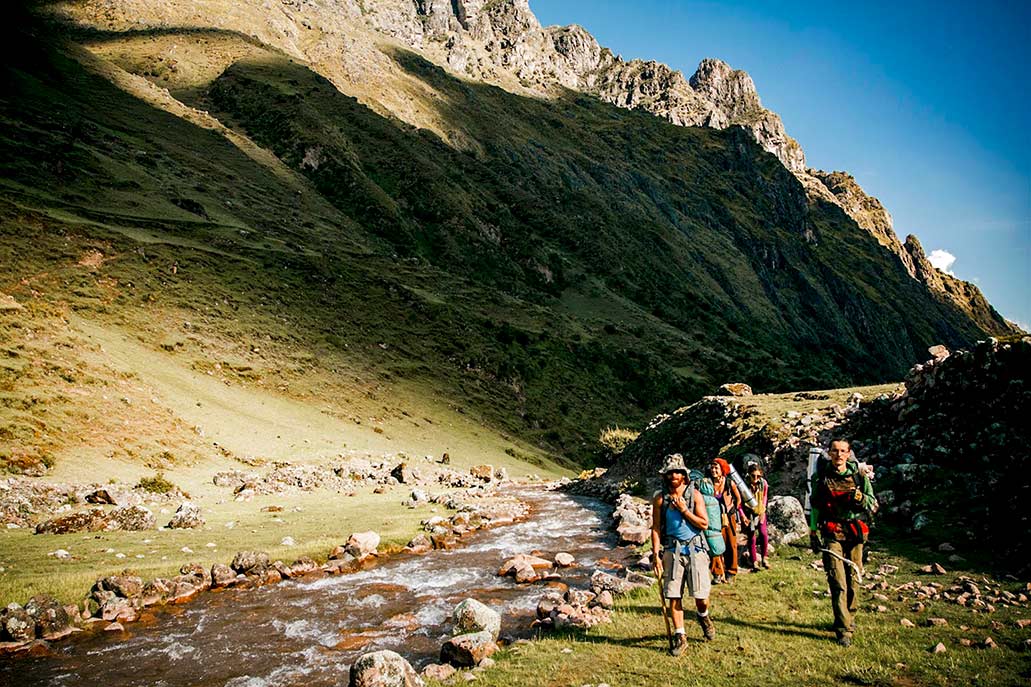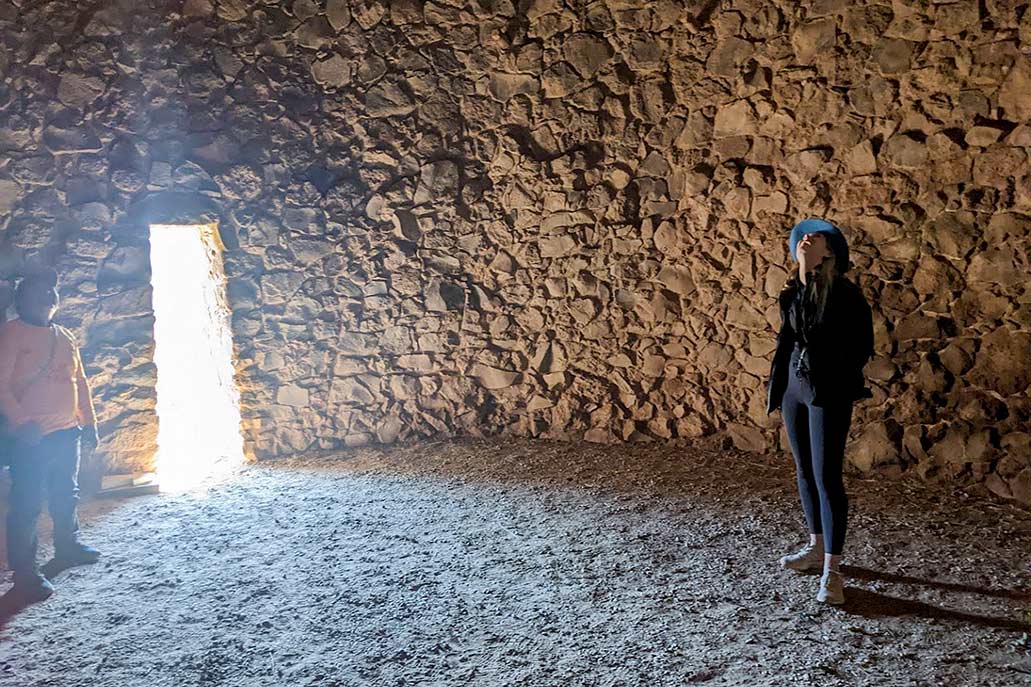Experiential tourism in Cusco and on the way to Machu Picchu
Experiential tourism offers a new way of getting to know traditional or classic destinations. In Cusco and during the route to Machu Picchu you can find some alternatives. One of the benefits of experiential or community-based tourism is that it allows you to travel to the deepest rural communities of the Andes. In these communities, customs and traditions of the past can be found. The communities that offer these services are organized collectively so that everyone benefits. In this article, we will go deeper into the activities they usually offer and we will know some options that can be done in Cusco through the Sacred Valley, the South Valley, and on the way to Machu Picchu.
Content
What is experiential or community-based tourism?
It is one of the alternatives to tourism, but to get inside a community. This will allow you to learn more about the culture of the community, traditions, customs, and especially the way of daily life it has. This form of tourism is often frowned upon because it is suggested that it does not offer a real experience. However, there are more positive cases and the people who have done it always recommend this form of tourism. However, to avoid problems, we believe it is appropriate to detail our understanding of it about how Experiential Tourism should be and the things they should offer in order not to fall into scams or similar things.
The main characteristic to recognize that an experiential tourism service is being provided is that cultural immersion activities are offered. Cultural immersion is understood as integration into the daily activities of a community. This is through the realization of some activities in which visitors are involved in the collectivity of the community. In this sense, the experiences that are achieved not only have to do with knowing or appreciating a culture from the periphery but the experiences are nurtured from within a culture. In this sense, it is easier to share experiences, teachings, conversations, and other traditional activities that encourage and integrate tourists into a community, even if only for a couple of days.
The purpose of achieving this integration in such a short time is to share experiences in order to get to know, understand, and experience the way of life of the community being visited. There are many ways to achieve this type of tourism. Some communities offer this service and provide certain housing for lodging and the community organizes itself to provide more services. However, some other options may not be well planned, but achieve a higher degree of immersion because the integration is done naturally. Here are some other characteristics so that you can better recognize this type of service and not fall into false speeches or tours that fail to deepen experiences in any community.
Experiential tourism must offer an authentic space, that is to say, it should seek the inclusion of spaces that allow the distancing of the “normal” to enter a different space. In this way it is guaranteed to know, not only a different landscape and nature, but also the expressions of a new culture. This is so that the intercultural encounter will be fruitful since the exchange of both will generate feedback and understanding of the new and a better understanding of one’s own culture. Since some expressions and ways of life tend to vary by symbolic conceptions and in different proportions.
Another of the characteristics of experiential tourism is to provide activities in which visitors can actively participate. This is closely related to the concept of community-based tourism, since in both cases the communion between the tourist and the visiting community is sought. These activities must be linked to respect for the environment and promote sustainable activities to generate greater benefits for both the communities and future generations.
Cusco is a privileged place if you are looking for these activities. Experiential tourism generates a spiritual and social change in the people who take part in it. The change arises from the understanding of the coexistence of various cultures that inhabit every corner of the planet Earth. In this sense, it is recommended that people who are encouraged to do this type of tourism, understand that they will experience a completely different world than the one they may be used to. The following are some of the options that can be done in Cusco.
Experiential tourism in the Sacred Valley
If we talk about Cusco as a tourist destination, we can find two territorial sectors comprising different destinations. The first of these is the Sacred Valley and the next is the South Valley. Both are very close to Cusco but with well-defined geographical differences. Now we want to focus on the options that can be found in the Sacred Valley. The Sacred Valley is characterized by having an ideal geographical space for agriculture and where the Incas created some important constructions.
In addition, the Sacred Valley has a pleasant climate, since it is warmer than Cusco. However, this is all that is normally known. The truth is that by different routes and the high mountains, you can reach peasant communities. Few people take into account the existence of these communities and unfortunately, local governments continue to neglect them. In this sense, it is possible to visit these communities that, thanks to this isolation, managed to keep some cultural traditions almost intact and these days open the doors of their homes.
One of these destinations is in the community of Ccaccaccollo. To get to the place where this service is offered, you have to hike through the upper area of the Sacred Valley. This destination has a lot of experience doing experiential tourism. In this place, you can learn how to harvest, sow, and process alpaca wool to obtain multicolored garments. In addition, there are details and secrets for the coloring of the wool obtained. It is important to know that most of the activities offered are eco-friendly and sustainable.
Other destinations are located in the heights of Ollantaytambo. In these places, you can appreciate beautiful landscapes as an additional service. Likewise, you can learn and participate in the spinning and coloring of wool. Likewise, the group of visitors can integrate into the community following the music and dances that they perform as a welcome. Later, they are offered the local dress or typical costume. After the presentation of the weavings, there is a presentation and demonstration of the cultivation process. An explanation is made of the best conditions for planting and how they try to maintain the fertility of the land.
During this type of tourism, it is necessary to understand that you will also try new dishes. In short, you will taste a gastronomic world very different from the one you have tasted, even in Cusco. The communities sometimes involve the visitors in the preparation of the food and if you are curious you can learn some new secrets or the preparation of these dishes. Some communities near Ollantaytambo where you can do Experiential Tourism are Patacancha, Willoq Alto and Tauca.
Experiential tourism in the South Valley
As its name indicates, the South Valley is located in that direction if the starting point is Cusco. In the South Valley you can find different attractions such as archaeological and natural sites. The climate is more icy if we compare it directly with the Sacred Valley. Thanks to the formation of the valley formed by the waters of the Vilcanota River, it is also possible to work with agriculture. Throughout the Sacred Valley and the Southern Valley it is possible to plant corn thanks to the presence of the Vilcanota River that crosses and forms both valleys.
There are also extensive areas of corn, potato and bean plantations, but with high mountains that are covered with little vegetation. In this place it is possible to do experiential tourism in the community of Raqchi. Raqchi is located approximately 3 hours away from Cusco. In this place you can, find an Inca enclosure of great value that receives the name of the community.
The community developed different activities in order to be a more attractive destination. Being far from Cusco, it is a destination that few people visit. This, in comparison to the Sacred Valley. The most popular tour to visit Raqchi is the Ruta del Sol. His tour can start in Cusco or Puno and will culminate by covering the route between both regions. This makes it one of the most interesting tours. However, when doing this tour it is unlikely to capture the essence of the community because of the immediacy of the visit. For this reason, and as we mentioned, the town offers an experiential tourism service.
This experiential tourism service usually begins in Cusco. In this sense, the distance must be covered with the trip, which can be in a Sprinter minivan. Sometimes it is possible to travel from the door of the tourist’s hotel and sometimes from a meeting point. The trip is comfortable and you cross beautiful landscapes until you reach the archaeological site of Raqchi. In this place, you can learn more about the Temple of Wiracocha, one of the largest temples of the Inca culture. There the villagers will be ready and waiting for the group, all of them with their costumes and even with live music and dance. Being one of the warmest welcomes.
In Raqchi, we normally start by visiting the Inca archaeological site. The activities continue with the ascent to the viewpoints of the place to better contemplate the whole place. At the end of the tour, a dinner prepared with local products will be served and a sharing will take place. You will spend the night in one of the houses specifically set up for overnight stays. The next day we will do activities such as a new hike to make a ceremony in gratitude to the Pachamama in one of the most imposing mountains of the place. After that, we continue with the explanation and the pottery workshop, just before lunchtime. After tasting an exquisite lunch it is time to return to Cusco.
Experience tourism on the way to Machu Picchu
On the other hand, if what you want to do is to visit Machu Picchu combining activities similar to those of experiential tourism. The best alternative is to do the Lares Trek. This, like other trekking routes, has some variations. But the quality of this tour is that it allows a tour of the communities of the district of Lares. These communities have only one way in which they can communicate. This route can only be covered by hiking. This is why the Lares Trek is best known as a hiking activity, but it is also a cultural route.
It is known as a cultural route because during the first two days of the hikes you reach communities where you can interact with the local people. The first night we arrive at Wacahuasi, where the community is in charge of lodging the group and also preparing dinner. In the place where the meeting takes place, different activities are carried out. Some of these people carry out weaving workshops and others simply share their experiences and the joy of having visitors.
The second community that can be visited is Quiswarani. There it is possible to set up camp and spend the night. The meeting with the community takes place during dinner. Some of them will give classes on spinning, others on weaving and the whole process of obtaining alpaca wool. Although this route is not an experiential tourism as such, the route allows you to get to know more places and make connections with the people of these communities. Along the way there are more communities. That is why some agencies manage other routes or visits with other communities.
This tour will culminate in Machu Picchu. Before the last day, you have to reach Ollantaytambo, so it will also be possible to appreciate all the landscapes of the Sacred Valley. From this district, it is time to take the train ride to the wonder of the world. Before that, you will arrive at Aguas Calientes or Machu Picchu Town where you will spend the night. On the last day, you will make the ascent and tour of Machu Picchu and also return to Cusco. The way to return to Cusco is by train or by the bimodal service that combines a train ride to Ollantaytambo and then another by bus to Cusco.
Some recommendations
- Remember to be respectful of the traditions and customs shown by the communities.
- This type of tourism does not offer premium services (at least not the vast majority), so caution is advised.
- It is important to take into account that you will taste a different gastronomy than the one you are familiar with.
- The clothing provided is only a loan.
- It is important to take into account the schedules at the beginning of the tour, as well as when returning. This in order to comply with all the activities.
- It is not essential to speak Quechua, the guide will ensure assertive communication.
- Some members of the communities will be able to communicate in Spanish and even English.
- This tour is recommended for people who really want to interact with the more remote communities.
